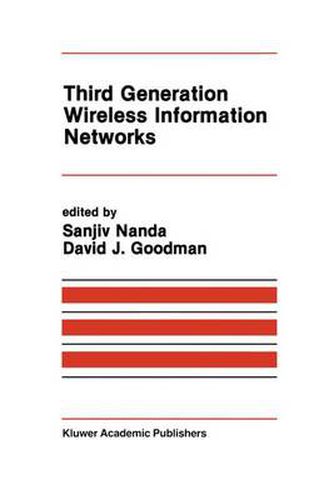Readings Newsletter
Become a Readings Member to make your shopping experience even easier.
Sign in or sign up for free!
You’re not far away from qualifying for FREE standard shipping within Australia
You’ve qualified for FREE standard shipping within Australia
The cart is loading…






This title is printed to order. This book may have been self-published. If so, we cannot guarantee the quality of the content. In the main most books will have gone through the editing process however some may not. We therefore suggest that you be aware of this before ordering this book. If in doubt check either the author or publisher’s details as we are unable to accept any returns unless they are faulty. Please contact us if you have any questions.
Rutgers University launched WINLAB in 1989, just as the communications industry, the Federal government, and the financial community in the United States, were waking up to the growing public appetite for wireless communications and to the shortage of technology to feed it. The secret was already out in Europe, where no fewer than three new cordless and cellular systems were progressing from drawing board to laboratory to factory to consumers. In July 1989, the FCC held a well-attended tutorial that turned into a debate over whether second generation British or Swedish technology held the key to mass-market personal communications. Many in the audience wondered whether United States technology was out of the picture. Technology uncertainties are more acute in wireless communications than in any other information service. For example multi-gigabit optical fiber communications have followed an orderly progression from basic science leading to technology, which in turn stimulated standards, and then commercial products. Eventually applications will be found and industry and society at large will reap the benefits. By contrast, the applications of wireless communications are apparent to an eager public. A large market exists but is held in check by a shortage of capacity. The demand has led the cellular industry to formulate standards for advanced systems before the technology is in place to implement them. Everyone holds their breath waiting to observe performance of the first products. Gaps in basic science add to the uncertainty and forestall the resolution of technological debates.
$9.00 standard shipping within Australia
FREE standard shipping within Australia for orders over $100.00
Express & International shipping calculated at checkout
This title is printed to order. This book may have been self-published. If so, we cannot guarantee the quality of the content. In the main most books will have gone through the editing process however some may not. We therefore suggest that you be aware of this before ordering this book. If in doubt check either the author or publisher’s details as we are unable to accept any returns unless they are faulty. Please contact us if you have any questions.
Rutgers University launched WINLAB in 1989, just as the communications industry, the Federal government, and the financial community in the United States, were waking up to the growing public appetite for wireless communications and to the shortage of technology to feed it. The secret was already out in Europe, where no fewer than three new cordless and cellular systems were progressing from drawing board to laboratory to factory to consumers. In July 1989, the FCC held a well-attended tutorial that turned into a debate over whether second generation British or Swedish technology held the key to mass-market personal communications. Many in the audience wondered whether United States technology was out of the picture. Technology uncertainties are more acute in wireless communications than in any other information service. For example multi-gigabit optical fiber communications have followed an orderly progression from basic science leading to technology, which in turn stimulated standards, and then commercial products. Eventually applications will be found and industry and society at large will reap the benefits. By contrast, the applications of wireless communications are apparent to an eager public. A large market exists but is held in check by a shortage of capacity. The demand has led the cellular industry to formulate standards for advanced systems before the technology is in place to implement them. Everyone holds their breath waiting to observe performance of the first products. Gaps in basic science add to the uncertainty and forestall the resolution of technological debates.